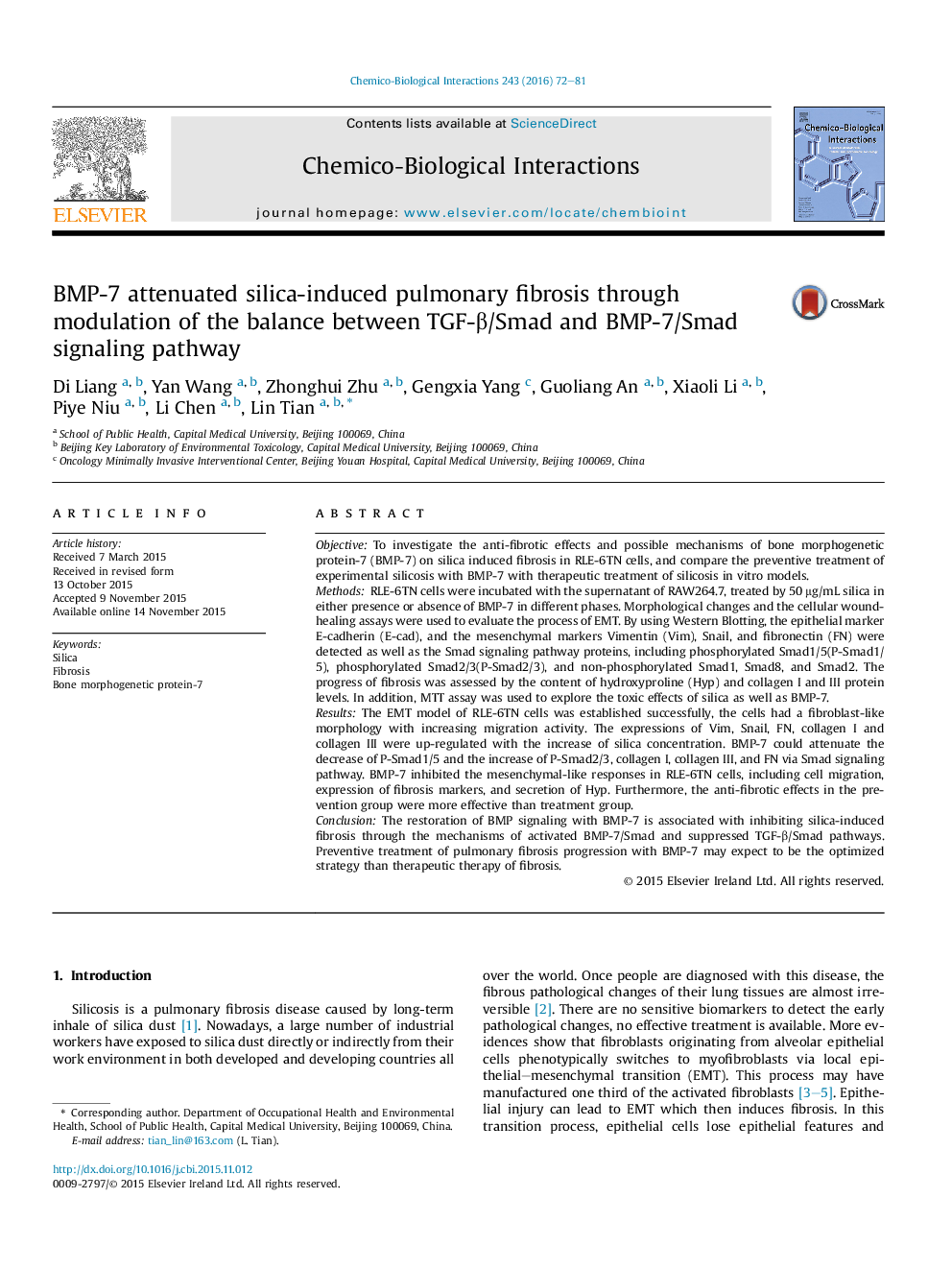| Article ID | Journal | Published Year | Pages | File Type |
|---|---|---|---|---|
| 2580084 | Chemico-Biological Interactions | 2016 | 10 Pages |
•Silica-induced EMT and fibrosis in RLE-6TN cells in a dose-dependent manner.•Silica-induced fibrosis associated with Smad signaling balance.•BMP-7 had both preventative and therapeutic anti-fibrotic effects.
ObjectiveTo investigate the anti-fibrotic effects and possible mechanisms of bone morphogenetic protein-7 (BMP-7) on silica induced fibrosis in RLE-6TN cells, and compare the preventive treatment of experimental silicosis with BMP-7 with therapeutic treatment of silicosis in vitro models.MethodsRLE-6TN cells were incubated with the supernatant of RAW264.7, treated by 50 μg/mL silica in either presence or absence of BMP-7 in different phases. Morphological changes and the cellular wound-healing assays were used to evaluate the process of EMT. By using Western Blotting, the epithelial marker E-cadherin (E-cad), and the mesenchymal markers Vimentin (Vim), Snail, and fibronectin (FN) were detected as well as the Smad signaling pathway proteins, including phosphorylated Smad1/5(P-Smad1/5), phosphorylated Smad2/3(P-Smad2/3), and non-phosphorylated Smad1, Smad8, and Smad2. The progress of fibrosis was assessed by the content of hydroxyproline (Hyp) and collagen I and III protein levels. In addition, MTT assay was used to explore the toxic effects of silica as well as BMP-7.ResultsThe EMT model of RLE-6TN cells was established successfully, the cells had a fibroblast-like morphology with increasing migration activity. The expressions of Vim, Snail, FN, collagen I and collagen III were up-regulated with the increase of silica concentration. BMP-7 could attenuate the decrease of P-Smad1/5 and the increase of P-Smad2/3, collagen I, collagen III, and FN via Smad signaling pathway. BMP-7 inhibited the mesenchymal-like responses in RLE-6TN cells, including cell migration, expression of fibrosis markers, and secretion of Hyp. Furthermore, the anti-fibrotic effects in the prevention group were more effective than treatment group.ConclusionThe restoration of BMP signaling with BMP-7 is associated with inhibiting silica-induced fibrosis through the mechanisms of activated BMP-7/Smad and suppressed TGF-β/Smad pathways. Preventive treatment of pulmonary fibrosis progression with BMP-7 may expect to be the optimized strategy than therapeutic therapy of fibrosis.
